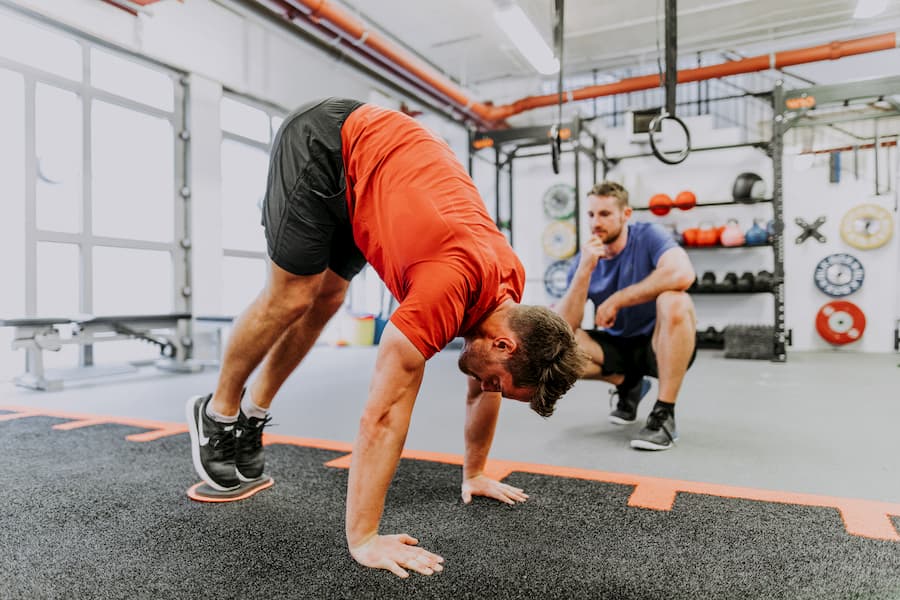
Categories
Is Stretching Really That Effective After a Workout?
Or does stretching actually slow down the recovery process?
We stretch for lots of reasons: Because it feels good, because it’s part of our pre-workout routine, because a muscle is stiff and we think stretching will fix it. But most of what we know about stretching—and thus the ways we use it—are based on wishful thinking and outdated science.
We’re stretching for all the wrong reasons.
Static stretching is commonly prescribed post workout: holding a stretch position for up to 30 seconds before releasing. This type of stretching can help tone down the nervous system making the body feel more relaxed. For years this type of stretching has been thought to decrease the potential for muscle soreness and stiffness. But does post workout stretching actually help with recovery, and is there any research to back this up?
Recent research is actually proving that post workout stretching has little to no effect on reducing soreness.
Taking a look at the science…
A study on post-exercise recovery techniques to reduce muscle damage, soreness, fatigue and inflammation concluded that stretching seemed to have little impact on this recovery process. In this study, massage was the most effective at reducing perceived fatigue and had the largest effect on DOMS post training. In terms of muscle damage and inflammation massage was deemed the most effective at reducing these signs, whereas stretching actually led to slightly larger increases in creatine kinase (a marker for muscle damage).
Proving that stretching might not only be ineffective, it could actually slow down the recovery process.
So what should you do if you’re feeling sore after sessions?
1. Massage
This study concluded that massage reduced DOMS and perceived fatigue post training. If you’re left feeling particularly sore it might be worth scheduling in a massage.
If this isn’t an option try some SMR (Self Myofascial Release) with a foam roller; it might help to ease tightness, reduce inflammation and remove waste products from the working muscles to speed up the recovery process.
2. Cool showers / baths
While cold water immersion after training can lead to reduced muscle growth and strength gains, the study discovered that any water below body temperature is effective at promoting recovery. So while an ice bath may not be ideal if you’re trying to build lean muscle, having a cool or lukewarm bath is beneficial for recovery.
3. Nail the recovery basics: sleep, hydration and nutrition
Sleep is probably one of the cheapest and most underrated recovery strategies out there. Changes to your body for all your hard work in the gym actually happen while you sleep – muscle repair and growth are night time occurrences and if you’re not getting enough shut eye, you’re reducing your recovery potential.
The same goes for what you put in your body. Alcohol will impair protein synthesis (the process by which small micro tears are repaired and muscle grows) – so if you drink after training it’s going to have a negative impact on muscle repair. Stay hydrated and fuel your body with predominantly whole, unprocessed foods that aren’t really high in sugar.
4. Stay active – there’s always something you can do
Staying active is going to help relax the muscles and remove the waste products from tissues.
While you might feel sore and stiff after the previous day’s workout it is better to get some active recovery in to get the body moving: go for a walk or do some low intensity cardio (e.g. bike, swimming). And remember, you always have parts of the body that aren’t sore so you can still go to the gym and switch up your training to focus on another body part, or have a lighter session.
While sitting on the sofa may feel like all you are up for, it’s probably the worst thing you can do for optimal recovery.
Mobility and movement prep is key
Mobility (strength and range of motion at a joint) is crucial to ensure that we keep our muscles and joints in good working order and help stay injury free. Mobility drills and activation at the beginning of a session are going to help prepare the body for your training session – this is something we include in every single one of our training sessions.
Ensure that you do some mobility work and movement preparation (e.g. bodyweight squats / bear crawls) before jumping into working sets of high intensity activities. This will help prime your body for the session, maximising both performance and the recovery process.
Some level of soreness is inevitable when training as your body responds to a new training stimulus, higher intensities or increased training volume. But instead of doing a quick static stretch at the end of your next workout, think about the after care process holistically, and what you can be doing around your training sessions to help promote more effective recovery.
Our mission is to help people live their best lives outside of the gym by providing the best possible standards of personal training in London.
Related Articles
- Stretching Good or Bad?
- 10 Fitness Myths and The Truth
- Six Most Common Causes Of Gym Injuries
- 4 Tips To Develop a Health and Fitness B.S Filter
- Hip Hinge Your Way to a Longer Life


